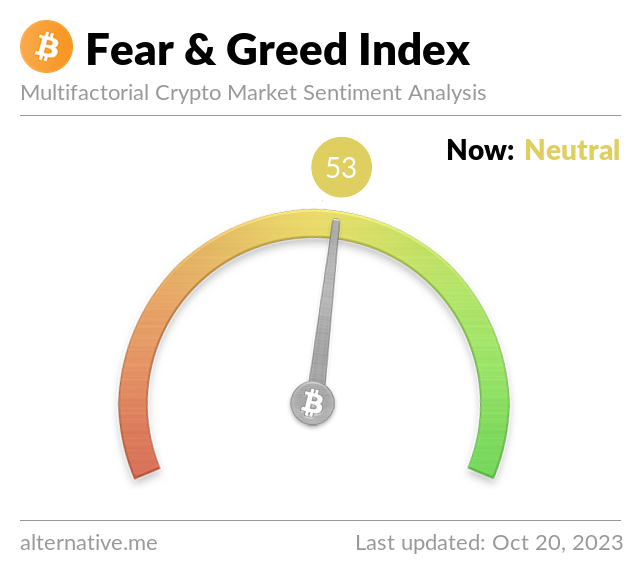Summing Up The Week
Between higher retail sales and a 10-year nearly hitting 5% early in the week, the markets were already reeling, and this was before the Powell smackdown on Thursday when Federal Reserve Chairman Jerome Powell came out extremely hawkish where many analysts actually expected a dovish speech.
This week has certainly thrown the markets back into the seasonal volatility I’ve come to expect from this time of year.
Let’s take a look at the news that moved the markets this week…
Market News
September retail sales rose 0.7%, higher than expected
On Tuesday, retail sales numbers for September showed an increase of 0.7% where estimates were for just 0.3%, reported CNBC. Although a strong U.S. consumer is good for the economy, such an increase in retail sales shows that the consumer continues to spend like mad, an activity the Federal Reserve would like to curb.
As a result, the unexpected retail sales number caused the yield on the 10-year U.S. Treasury to rise to nearly 4.85%, a level not seen in well over a decade, as the market tried to discount the possibility of the Fed raising interest rates once again in its November meeting.
10-year yields hit 16-year highs, 30-year mortgages hit 8%
While not necessarily market-moving news on its own right, the rate for fixed 30-year home mortgage loans hit 8% for the first time since 2000, reported CNBC. The actual market-moving news was what caused the mortgage rates to spike – a spike in the 10-year U.S. Treasury.
The yield on the 10-year Treasury hit 4.928% intraday on Wednesday, a level it hasn’t seen since July 2007, more than 16 years ago.
The Treasury yield rocketed higher shortly after President Joe Biden announced he would be seeking an “unprecedented” aid package for Israel. Wars are inflationary as country’s take on more debt to pay for their military expenses, and now the U.S. will be paying for two wars with the Ukraine-Russia war showing no signs of stopping.
In order to take on debt, the U.S. will need to sell more Treasurys, and with all the never-ending spending and fiscal irresponsibility combined with Japan, China, and the U.S.’s own Federal Reserve no longer buying Treasurys, the rates will likely continue higher to entice investors to buy the United States’ ballooning debt.
Powell warns: “Inflation is still too high”
During his speech on Thursday, Federal Reserve Chairman Jerome Powell warned that inflation remains too high and that the central bank expects further rate hikes to bring it in, reported CNBC.
This hawkish commentary was the exact opposite of what most market analysts were expecting from the Fed, so the market, which had been rallying in the morning into Powell’s 12 p.m. speech, reversed and continued the selloff seen on Wednesday. The commentary also sent the yield on the 10-year U.S. treasury within a hair’s breadth of 5.00%, ticking 4.996% shortly after Powell’s speech.
After the market closed, the U.S. 10-Year Yield ended up briefly crossing over 5.00% in after-hours trading.
Next Week’s Gameplan
With the seasonal volatility still very much in the markets, I anticipate the coming week to bring more of a downtrend which means we’re firmly in Buying Season. I will once again reiterate that long-term investors should never fear market selloffs and we should never, ever sell into a market panic.
Market selloffs bring buying opportunities, not selling opportunities. Always buy small and buy in stages since we don’t know how low stocks could go, but remember that your two options in a systemic selloff are to buy or hold, never to sell.
With that, keep calm and keep investing on, and I’ll see you back here next Friday!
This Week in Play
Stay tuned for this week’s episodes of my two portfolios Investments in Play and Speculation in Play coming online later this weekend!
Crytpo Corner

Bitcoin Price (in USD)
%
Weekly Change
Bitcoin Price Action
Fake Bitcoin News… Real Crypto Rally.
After false reports spread throughout the Internet that the SEC had approved BlackRock’s Bitcoin ETF, Bitcoin exploded higher in another move that has become emblematic of Bitcoin and the cryptocurrency sector as a whole: Bitcoin rallied more than 8% only to immediately retreat nearly the same amount, all within a 24-minute time span on Monday morning.
The move prompted a friend of mine to comment, “this is why no one takes the space seriously – if Apple’s stock did this kind of thing, the SEC would investigate every single time.”
I couldn’t agree more.
While the extreme volatility makes Bitcoin an exciting asset to trade and be involved with, the reality is mainstream acceptance won’t come until the volatility decreases from its current conditions… dramatically as the majority of investors do not have the stomach for that kind of risk and volatile price action.
Bitcoin smashed through the previous weekly high at $28,613.37 before finding resistance at its new weekly high at $30,248.00 on Friday.
The Bullish Case
Some Bulls are trying to make the argument that the false reports of an approved ETF indicate that the SEC is nearing approval and that now is the time to buy Bitcoin ahead of an ETF’s approval. Unfortunately for the Bulls, the process for the SEC to approve ETFs is lengthy with many experts predicting the soonest we could see a Bitcoin ETF would be 8-12 months with some estimating even longer.
The Bearish Case
With the rest of risk equities weakening, Bears argue it’s only a matter of time before the weak hands in Bitcoin decide to cut their losses and sell their positions in crypto, too. Bears continue to argue that the macro-environment presents no positive catalysts for Bitcoin, with some predicting a selloff of 50% or more from current levels.
Bitcoin Trade Update
Current Allocation: 2.067% (-0.233% since last update)
Current Per-Coin Price: $27,407.75 (-0.49% since last update)
Current Profit/Loss Status: +7.73% (+10.29% since last update)
When Bitcoin experienced the extreme pump on Monday, it triggered a series of small sell orders on its way up leaving with me an average selling price of $28,899.06 (before trading fees).
The sales lowered my per-share cost -0.49% from $27,541.46 to $27,407.75, and reduced my allocation size -0.233% from 2.300% to 2.067%.
Bitcoin Buying Targets
Using Moving Averages and supporting trend-lines as guides, here is my plan for my next ten (10) buying quantities and prices:
0.027% @ $27,069
0.027% @ $26,703
0.027% @ $26,420
0.027% @ $26,117
0.027% @ $25,806
0.027% @ $25,558
0.054% @ $25,047
0.082% @ $24,523
0.109% @ $23,971
0.136% @ $23,032
Not Your Keys, Not Your Crypto…
In light of brokerage failures in 2022, I no longer keep any of my crypto on an exchange and I only keep enough USD on the exchanges I use to execute my next few buys. I use multiple cold wallets from the brands Ledger and Trezor to hold my crypto (click the links to access the direct sites, and I receive no affiliate benefits from these links).
Additionally, I have now divided my allocated USD between two different exchanges – Gemini and Coinbase – in case one (or both) becomes insolvent. Disclaimer: We both receive a bonus if you use either my Gemini or Coinbase referral links to open accounts.
I do not trust anyone in the space, even with Coinbase (COIN) being publicly traded (and one of my own Investments in Play positions).
No price target is unrealistic in the cryptocurrency space – Bullish or Bearish.
While traditional stock market investors and traders may think the price targets in the cryptocurrency space are outlandish due to the incredible spread (possible moves include drops of -90% or more and gains of +1000% or more), Bitcoin has demonstrated that, more than any speculative asset, its price is capable of doing anything.
Here are some of Bitcoin’s price movements over the past couple of years:
- In 2017, Bitcoin rose +2,707% from its January low of $734.64 to make an all-time high of $19,891.99 in December.
- Then, Bitcoin crashed nearly -85% from its high to a December 2018 low of $3128.89.
- In the first half of 2019, Bitcoin rallied +343% to $13,868.44.
- In December, Bitcoin crashed -54% to a low of $6430.00 in December 2019.
- In February 2020, Bitcoin rallied +64% to $10,522.51.
- In March , Bitcoin crashed nearly -63% to a low of $3858.00, mostly in 24 hours.
- Then, Bitcoin rallied +988% to a new all-time high of $41,986.37 in January 2021.
- Later in January 2021, Bitcoin dropped -32% to a low of $28,732.00.
- In February, Bitcoin rallied +103% to a new all-time high of $58,367.00.
- Later in February, Bitcoin dropped -26% to a low of $43,016.00.
- In April , Bitcoin rallied +51% to a new all-time high of $64,896.75.
- In June , Bitcoin crashed -56% to a low of $28,800.00.
- In November, Bitcoin rallied +140% to a new all-time high of $69,000.00.
- In November 2022, Bitcoin crashed -78% to a low of $15,460.00.
- In April 2023, Bitcoin rallied +101% to a high of $31,050.00.
- In June, Bitcoin dropped -20% to a low of $24,750.00
- In July, Bitcoin rallied +29% to a high of $31,862.21.
- In September, Bitcoin dropped -22% to a low of $24,900.00.
- In October, Bitcoin rallied +21% to a high of $30,248.00.
Where will Bitcoin go from here? Truly, anything is possible…
What if Bitcoin’s headed to zero?
The only reason I speculate in the cryptocurrency space is I truly believe Bitcoin isn’t headed to zero.
I am prepared for that possibility, however, by knowing I could potentially lose all of the capital I’ve allocated to this speculative investment. Professional advisers recommend speculating with no more than 5% of an investor’s overall assets. Personally, I’ve allocated less than that to speculating in crypto.
I feel that anyone who doesn’t fully believe in the long-term viability of cryptocurrency would be better served not speculating in the space.
On a good day, this asset class isn’t suitable for those with weak stomachs. On volatile days, the sector can induce nausea in the most iron-willed speculator. If a speculator isn’t confident in the space, the moves will cause mistakes to be made.
DISCLAIMER: Anyone considering speculating in the crypto sector should only do so with funds they are prepared to lose completely. All interested individuals should consult a professional financial adviser to see if speculation is right for them. No Get Irked contributor is a financial professional of any kind.
Ways to give back to GetIrked:
Send me a tip via Stripe! Thank you!
Get free money by signing up for an account with my referral link for Schwab
Sign up for Gemini and we each get $10
Click this referral link to get the Brave Browser
If you use Brave, you can also use the Tip function to tip me in Basic Attention Token (BAT).
Suicide Hotline – You Are Not Alone
Studies show that economic recessions cause an increase in suicide, especially when combined with thoughts of loneliness and anxiety.
If you or someone you know are having thoughts of suicide or self-harm, please contact the National Suicide Prevention Lifeline by visiting www.suicidepreventionlifeline.org or calling 1-800-273-TALK.
The hotline is open 24 hours a day, 7 days a week.


